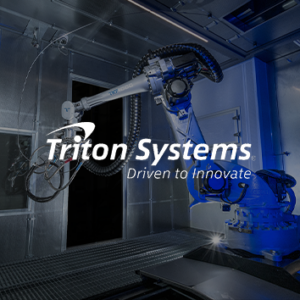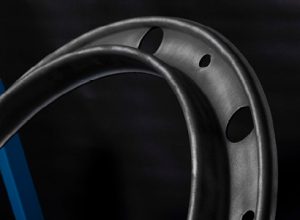By Max Osborne – fmr. Head of Engineering
Max Osborne is an Aerospace Engineer by background and enjoys following trends and developments in commercial airline and aeroplane markets. During his tenure at Boeing, Max held multiple roles including Lead Technical Engineer for Composite Fabrication.

COVID’s disruption of the global air travel market was deeper and longer than previous crises. But once borders reopened and public confidence returned, the market recovered quickly. People are hungry to travel and reconnect; business and leisure travel has exploded. Markets serviced by narrow-body (single-aisle, small-medium range) aircraft led the wider recovery, but now most airlines have their larger aircraft in service, reclaiming them from desert parking lots around the world [1].
Today, Boeing’s 20-year commercial market outlook shows demand for 41,000+ new aeroplanes – testimony to the ongoing strength of the market recovery. The models that dominate the narrow body aeroplane market specifically, the 737MAX & A320NEO, are derivatives of decades-old aeroplanes with incremental and marginal performance upgrades (largely owing to engine technology advancements; not airframes) and all remaining gains have essentially been exploited on these models. They will require all-new replacement designs. It is not a matter of if, but when.
There are no truly new or next-generation composite aircraft in the narrow body segment, except the Comac C919 (Chinese) and UAC MS 21 (Russian), neither of which are in serial production, proven in commercial service, and due to political climate are increasingly unlikely to ever receive international orders Extensively carbon fibre composite aircraft are limited to the wide body market (B787 / A350) where the technology has been developed and proven.
View Boeing’s 20 year commercial outlook here
After some initial hesitation and production and supply challenges with the Boeing 787 and Airbus A350, the airline market got a taste of carbon fibre composite aeroplanes – and now likes them. A lot. They are more fuel efficient, robust, require less maintenance and inspections, and while not yet proven, they will almost certainly last longer (around 20 years is a standard life for a metal aeroplane).
The problem is that production systems have not been developed to make composite aeroplanes at high rates. At peak production rates, the 737 was manufactured at ~60 aeroplanes a month, with the Airbus A320 similar. However the Boeing 787 composite airplane production maxed out at 14 aeroplanes a month, requiring two sites (Seattle and Charleston – they have now consolidated at the latter only due to a reduction in production rates) and an extensive global supply chain (Japan and Italy make composite parts that are flown to final assembly by the modified 747 Dreamlifter
Forecast demand and production rates for next-generation replacement narrow body aircraft is up to 200 aeroplanes a month; or 3.3 aeroplanes a day per manufacturer assuming the Airbus/Boeing duopoly continues. The longer it takes to bring these new designs to market, the faster they will be needed to fulfil demand due to passenger growth and aging aircraft replacement.
So, what is the production system that makes rate 100+ carbon fibre aircraft? Nobody has a feasible answer to that problem. It is one of the biggest challenges facing the industry.
Constraints include the cycle time to lay up composite parts (a wing could be days in lay-up, even with extensive large automation), 24 hours to cure cycle in an autoclave, plus demould, and cleaning. The tool turn time can be up to a week and aeroplanes have four wing skins (upper/lower/left/right). So, four tools needed to make one aeroplane worth of wings per week, or a set of four tools can do four aeroplanes a month. For a rate 100/month composite airplane program, that is 25 sets of four different tools. A total of 100 tools the size of an aeroplane wing, with the ability to manage and move them around the production system almost certainly necessitates multiple production sites.
Unfortunately, an aeroplane needs more than wings! If you are making carbon fibre composite wings, then a number of other critical parts are also going to be composite. Counting every control surface, fairing, panel there are thousands upon thousands of tools. This will require pulling on every supply chain possible, as fast as possible, to ramp up the production system.
Due to the diminishing performance returns compared with a composite wing, it is highly unlikely that the fuselages can feasibly be composite like the 787/A350 on a high-rate small airplane.
The two challenges are supply chain constraints and the technical problems inherent in the existing tooling solutions.
The industry is trying to do some key things to address tool utilisation and cycle time challenges for improved production costs and rates, with considerable R&D and investment in:
- New tooling technologies, such as additive manufacturing;
- Faster composite lay-up (automation)
- Faster/rapid cure composites – to reduce tool time and qty; and
- Out-of-autoclave cures – to reduce capital cost and eliminate large, fixed monuments to enable flexible production facilities.
- New tooling technologies such as AM, materials, and integrally heated tooling are some of the key tooling technology initiatives.
New tooling technologies such as AM, materials, and integrally heated tooling are some of the key tooling technology initiatives. Additive manufacturing offers reduced lead times for tools, and the opportunity to insource and consolidate manufacturing to reduce dependency on external suppliers for configured tools. So long as a sufficient stock of raw material such as AM powder is available, it can be turned into a tool closer to the point of use, with benefits such as reduced lead times, enabling later design freezes and giving manufacturing engineers nearer and quicker access to production equipment for pre-production trials and production hardening.
On the composite material side, currently composite heating rates are limited by the material chemistry more so than equipment capability (resins don’t like getting heated quickly), but if this is not the limiting factor (a lot of investment is going into new composites that can be ‘snap’ cured) then the heating limitation will be a physical system capacity issue. Currently, we cure composites using heating elements to heat air (oven) or nitrogen (autoclave), the air then heats the tool, the tool heats the part, and the part cures. At the end of the cycle the dampers open and vent the heat energy into the atmosphere. By some accounts the process is <0.5% thermally efficient in terms of the amount of heat energy that does useful work to activate the chemical cross linking and cure the part. The rest is parasitic heating that is entirely wasted.
If you can heat the tool more quickly by using lower thermal mass tooling and/or directly through embedded heating elements, this eliminates much of the waste and allows much faster heat up and cool down rates, assuming the composite resin system can handle it. You can turn tools and parts in a matter of hours rather than days. Current solutions are essentially inadequate, bonded electrical or hot air heater cells, embedded electrical elements (in carbon fibre tools), and/or heater blankets on the top side.
The aerospace composites industry hasn’t had a qualified rapid cure composite material to be able to fully leverage or demand anything better, but once it does, the secondary technology demand will follow and truly embedded heating within tooling will be a game-changer for the first company to master it.
In the next part in this series, we will look at the opportunities for additively manufactured tooling including Titanium as a tooling material.


